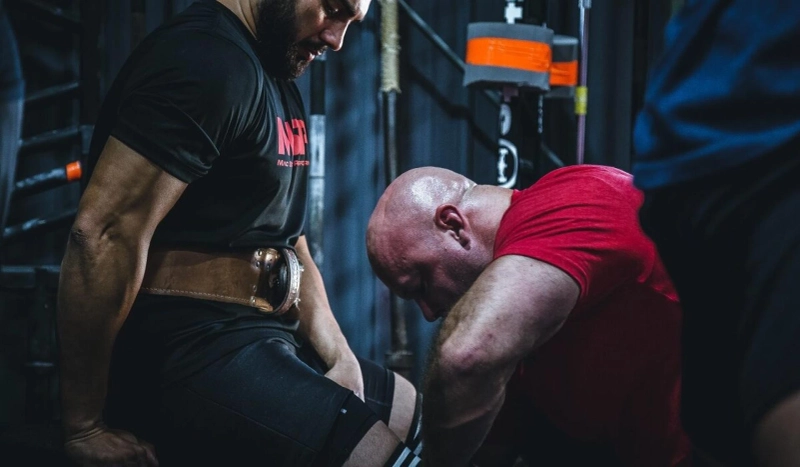Thigh belts, also known as thigh supports or thigh braces, are orthopedic devices designed to provide support and pain relief to the thigh area. They are commonly used in medical and sports settings to address a range of conditions and injuries affecting the thigh and adjacent areas. In this article, we will explore the medical benefits of thigh belts, their applications, and how they can be a valuable tool for individuals seeking relief and support for various thigh-related issues.
Understanding Thigh Belts
Thigh belt are typically made of flexible, breathable materials that wrap around the thigh. They are designed to be adjustable, ensuring a secure fit for different body types and injury types. Thigh belts are available in various sizes and designs, catering to the specific needs of patients and athletes.
Key Features of Thigh Belts:
Compression: Thigh belts provide gentle compression to the thigh, which can help reduce swelling and promote blood circulation.Support: They offer structural support to the muscles and soft tissues of the thigh, aiding in the prevention of further injury.Adjustability: Most thigh belts come with adjustable straps or Velcro closures, allowing for a personalized fit.Breathability: The materials used in thigh belts are often breathable, which reduces the risk of skin irritation and discomfort during extended wear.Lightweight: They are typically lightweight, making them suitable for everyday activities, exercise, and sports.Medical Applications of Thigh Belts
Thigh belts have a wide range of medical applications, including:
1. Hamstring Injuries
Hamstring injuries, such as strains or tears, are common among athletes, particularly in sports that involve sprinting or sudden accelerations. Thigh belts can provide compression and support to the hamstrings, reducing pain and allowing the injured muscles to heal properly.
2. Quadriceps Injuries
Injuries to the quadriceps muscles, which are located on the front of the thigh, can result in pain and discomfort. Thigh belts offer support to the quadriceps, promoting healing and preventing further strain.
3. Groin Injuries
Groin injuries, which can include groin strains or pulls, can be debilitating and painful. Thigh belts help by providing compression and support to the groin area, facilitating recovery.
4. Thigh Muscle Strains
Strains in various thigh muscles, including the adductors and abductors, can be effectively managed with thigh belts. These supports can alleviate pain and protect the injured muscles from further damage.
5. Iliotibial Band Syndrome (ITBS)
ITBS is a common overuse injury that affects the iliotibial band, a long band of tissue running along the outer thigh. Thigh belts can help reduce friction on the IT band during movement, relieving pain associated with this condition.
6. Thigh Contusions
Thigh contusions, or deep bruises, can result from trauma or impact injuries. Thigh belts can assist in reducing swelling and providing support to the injured area, facilitating healing.
7. Post-Surgical Support
After surgical procedures on the thigh or adjacent areas, such as knee surgeries, thigh belts are often recommended to aid in the healing process. They provide stability, reduce post-operative swelling, and alleviate pain.
8. Arthritis and Joint Pain
Thigh belts can be beneficial for individuals with arthritis or chronic joint pain in the hip or thigh area. The compression and support they offer can help manage pain and improve mobility.
How Thigh Belts Work
Thigh belts primarily work by providing compression, support, and stability to the thigh and adjacent areas. These mechanisms yield several medical benefits:
Compression and Reduced Swelling
By gently compressing the thigh, these belts help reduce swelling, inflammation, and fluid buildup, which are common responses to injuries and overuse. This compression can alleviate discomfort and promote a quicker recovery.
Stabilization and Protection
Thigh belts stabilize the muscles, tendons, and ligaments in the thigh area, minimizing the risk of further injury or strain. This added support is particularly valuable during physical activities and sports.
Pain Relief
The compression provided by thigh belts helps relieve pain and discomfort associated with various thigh conditions. Whether it's muscle strains, bruises, or joint pain, the consistent pressure can make a significant difference in how a patient feels.
How to Choose and Use Thigh Belts
When considering a thigh belt for medical purposes, it's essential to choose the right one for your specific condition. Here are some guidelines for selecting and using thigh belts effectively:
Consult a Medical Professional: Seek advice from a medical professional, such as a physical therapist or orthopedic specialist, to determine the most suitable thigh belt for your condition.
Proper Sizing: Ensure you choose the correct size to guarantee a snug fit without causing discomfort or constriction. Follow the manufacturer's sizing guidelines.
Positioning: Position the thigh belt over the affected area, making sure it covers the injured or painful region adequately.
Adjustability: Many thigh belts come with adjustable straps or closures. Ensure a secure fit without overtightening, which may impede blood flow.
Follow Instructions: Adhere to the manufacturer's instructions for usage, including recommended wear times and care instructions.
Combine with Rehabilitation: Thigh belts are often used in conjunction with rehabilitation exercises and physical therapy to achieve the best results.
Conclusion
Thigh belts are versatile orthopedic devices with a broad range of medical applications. Whether you're an athlete recovering from a sports-related injury or an individual seeking relief from thigh pain, these supports can play a crucial role in your rehabilitation and recovery journey. By providing compression, support, and stability, thigh belts offer effective pain relief and assist in preventing further injury, ultimately contributing to your overall well-being and quality of life. However, it's essential to consult with a healthcare professional to ensure you select the right thigh belt for your specific condition and use it correctly for the best results.


